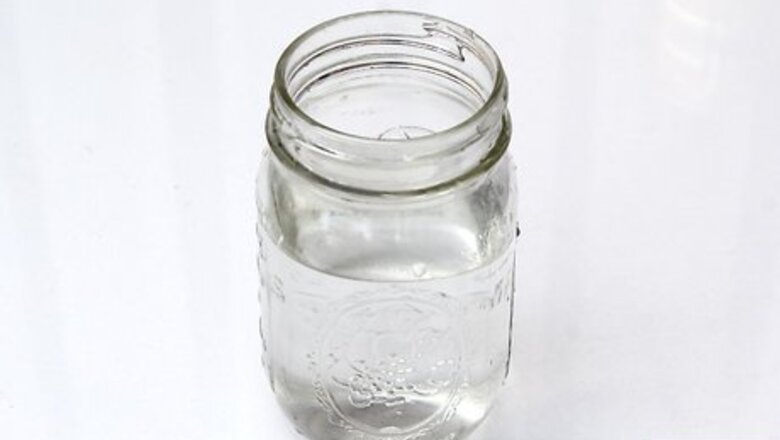
views
Using a Highlighter for Glowing Water
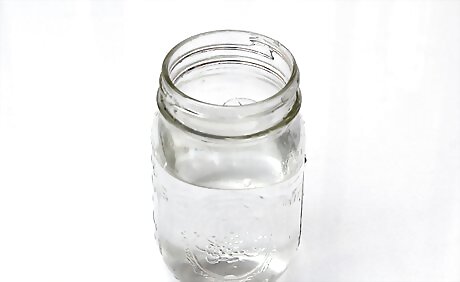
Fill a container with two cups of hot water. For the best effect, choose a clear glass, bowl, or bottle. You can vary the amount of water, but that will effect how strong your water glows. More water will dilute the glow, and less water may make it shine more intensely.
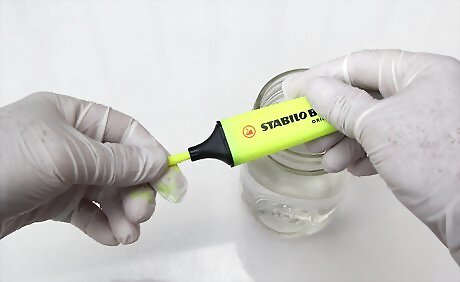
Put on rubber or latex gloves and remove the felt ink tube from a yellow highlighter. Pry off the bottom of the highlighter; you may want to use a knife or a pair of needle-nose pliers to get it open. Once the highlighter is open you can remove the felt ink tube from inside. The gloves will protect your hands from getting stained with ink. Not all highlighters work. Even if you test them under a blacklight and the ink appears to glow when you write, they may not work once diluted in the water. Your best bet is to use a standard yellow highlighter.
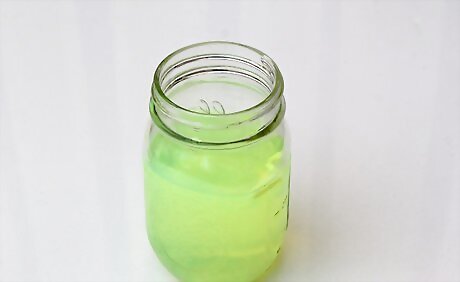
Place the ink tube in the glass of hot water and allow it to sit. It will only take a few minutes for the ink to begin mixing with the water. If allowed to soak for several hours, the water should glow very bright. Use gloved hands to twist and squeeze ink out of the tube when you are finished. When the ink tube is whitish, it means most or all of the ink is now in the water.
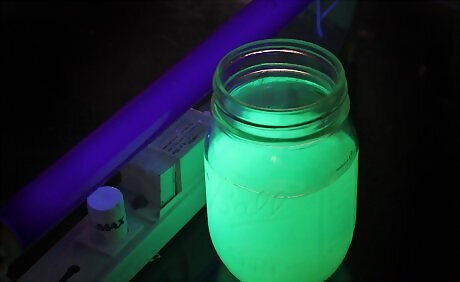
Turn on a blacklight and light up your bottles. The water will only glow in the presence of a UV light. Blacklights and blacklight bulbs can be found at party stores, lighting stores, or online.
Using Tonic Water and Jell-O for Glowing Baked Goods
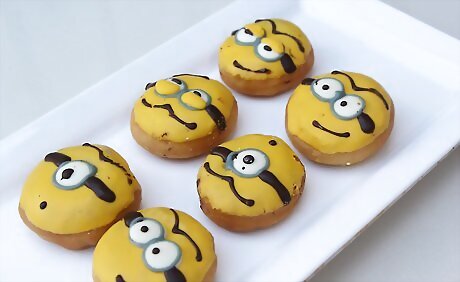
Prepare your baked goods and chill until firm. If you want to use the glaze on a cake, you'll need to bake, assemble, and frost the cake. Same goes for cupcakes. If you want to glaze cookies, follow your recipe and allow them to cool before attempting to glaze. If you are using the glaze on frosting, it is important the frosting is cold and firm to the touch. The glaze can soften or make the frosting watery if it is not hard.
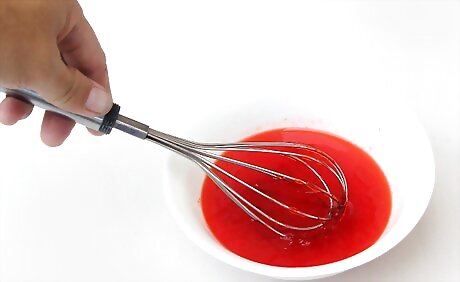
Pour one 3-ounce package of Jell-O to a bowl and add one cup boiling water. Though you can experiment with other flavors and colors, green (lime) Jell-O is the most effective and will give off the strongest glow. Whisk the powder for about one minute, or until thoroughly combined with the boiling water.
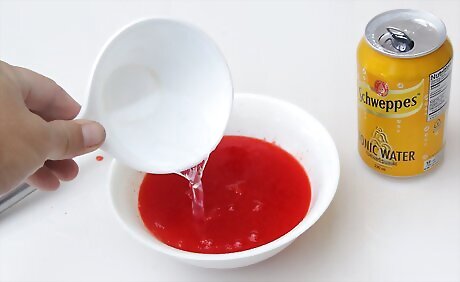
Add 1 cup chilled tonic water and continue mixing. Tonic water contains and ingredient called quinine, which is what gives it that bitter taste. The quinine responds to UV lights and will have a blue-white appearance. For extra glow-power, you could incorporate tonic water into your baked goods recipe. Try stirring five tablespoons into your frosting before using it on your cake or cupcakes.
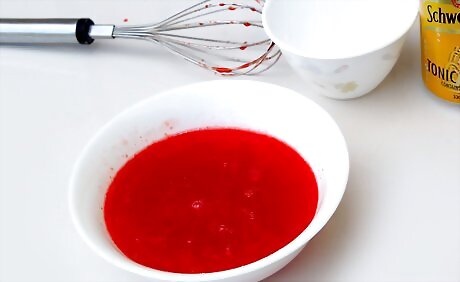
Allow the mixture to cool, but not set. The mixture shouldn't be hot to the touch, or it will melt your frosting, but it shouldn't be so cold that it begins to solidify. Wait until you can safely touch the mixture before you start glazing. You can use an ice bath to hasten the process, just make sure you don't cool the mixture so much that it begins to set.
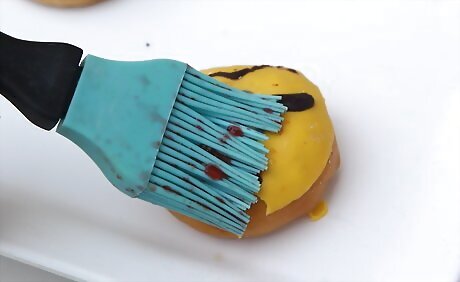
Brush the glaze onto your frosting. Use a pastry brush to brush the mixture onto your cake or cupcakes. If your frosting is frozen in place, you can even hold the cupcakes upside-down and dip them into the bowl. Try not to drip any of the glaze on the cake or pastry part of your baked goods, focusing only on the icing. Allow any excess glaze to drip off.
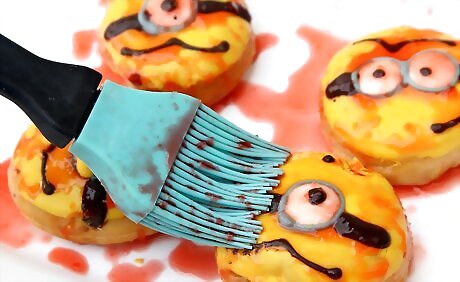
Repeat six times, placing your baked goods in the freezer between each application. To keep the frosting stiff, you need to put your cake or cupcakes back in the freezer to ensure it won't soften or melt. Six coats of glaze should give you total coverage (no missed spots) and be enough to get the desired glowing effect. Once all six coats have been applied, place your baked goods in the refrigerator for about 15 minutes so the glaze can set.
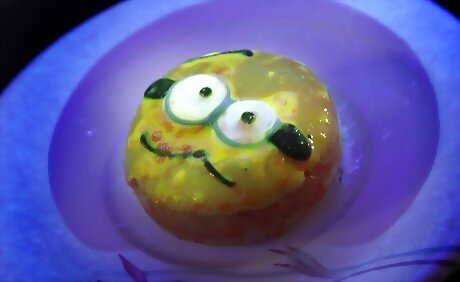
Serve under a blacklight. To really emphasize the effect, you may want to use several blacklights and place your baked goods as close to the lamps as possible. The green glaze may give your baked goods a slight green tint (especially if you used white frosting). Your frosting may have the slight taste of lime or tonic. Add a little flavoring to the frosting, like vanilla or almond, to cover the flavor if desired.
Using Vitamins for Glowing Water
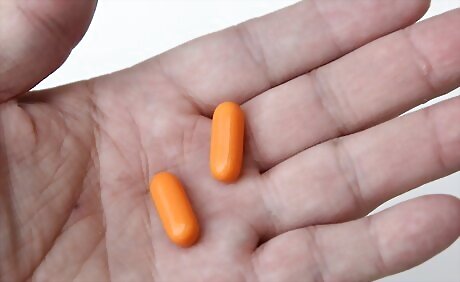
Purchase vitamins that contain fluorescent molecules. Vitamin A, thiamine (vitamin B), niacin, and riboflavin all fluoresce strongly, giving off a bright yellow glow. Most people choose a B Vitamin complex that contains a lot of thiamine and different B Vitamins. (Look for something called Vitamin B 50 complex or something similar).
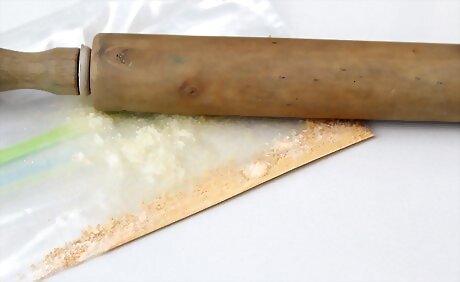
Put two vitamin pills in a resealable freezer bag and crush them with a kitchen mallet. Pound the vitamins into a fine powder by hammering them with the mallet or another heavy object, like a rolling pin or unopened bottle of wine. The bag will keep the powder contained so you don't lose any. Be aware that the pounding may cause tiny tears in the bag.
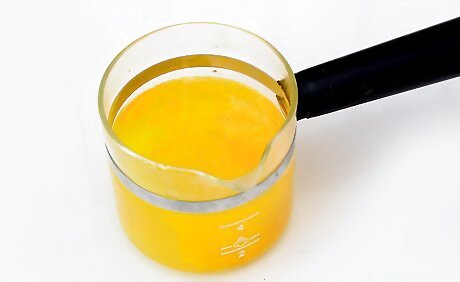
Pour the crushed vitamins into a container of warm water, about two cups. Stir the powder until it is mostly dissolved in the water. While this is a safe solution, you definitely don't want to drink any of this water.
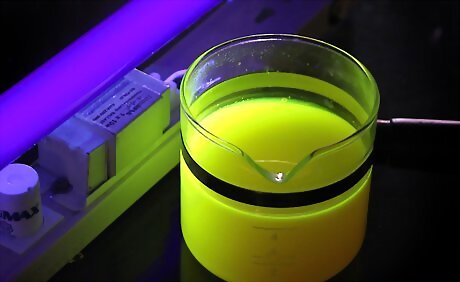
Add the cup of vitamin water to a warm bath, using a blacklight to make your bath glow. The fluorescent molecules in the vitamin won't glow in the dark, but they will glow in the presence of a blacklight. Use extreme caution when using a blacklight around water. Keep the light a safe distance from the water so there is no possibility that it might fall in.
Using Fluorescent Paint for Multi-Colored Glowing Water
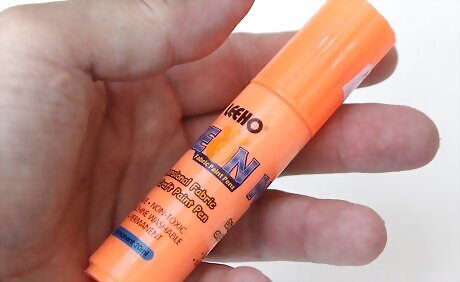
Purchase glow-in-the-dark or fluorescent paint from a craft store. If you want water that glows in different colors (instead of the yellow that is produced by almost all other methods), buy paint in different shades. Try blue, red, and yellow, which you can mix up to create more shades. Glow-in-the-dark paints will glow without the presence of a blacklight--they can be charged by exposure to regular light. The fluorescent paints will only respond to the UV rays from a blacklight. Look for paints that are designed for kids and are 100% non-toxic.
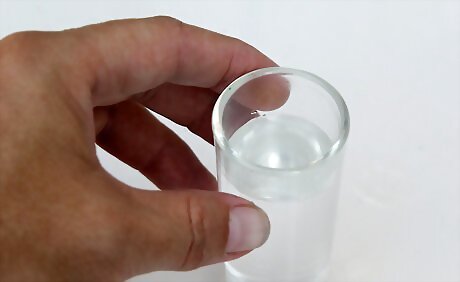
Set up containers for your different colors, filling each container with hot water. Using clear glasses or bottles will allow your glowing fluid to be bright and visible. Using hot water will dilute the paint faster, so you will see faster results.
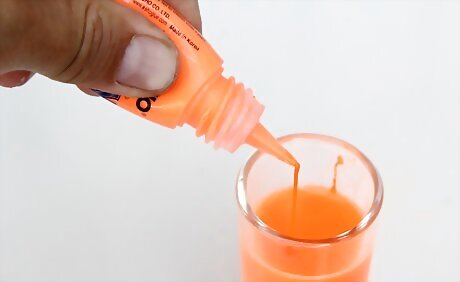
Add a dollop of paint to the water and stir. There's not a precise measurement for the paint--just add a little and, if you need more, mix in another few drops. Stir the paint vigorously until it mixes into the water.
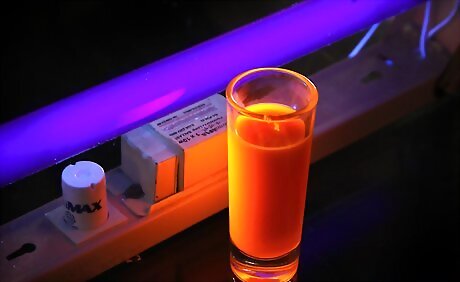
Turn out the lights and turn on a blacklight if you are using fluorescent paints. If you are using glow-in-the-dark paint, check the instructions on how to "charge" them so they glow. Usually you need to expose the paint to sunlight for several minutes before it will glow. The fluorescent paints will only glow if you have a blacklight. Have fun painting with these colors, mixing water to create new shades, or doing other crafts.
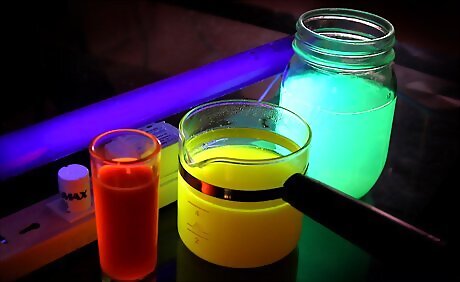
Finished.













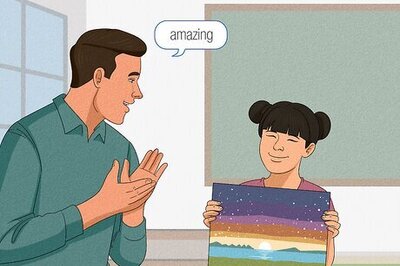


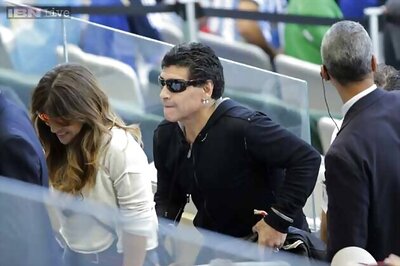
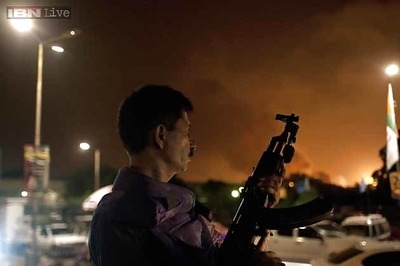
Comments
0 comment